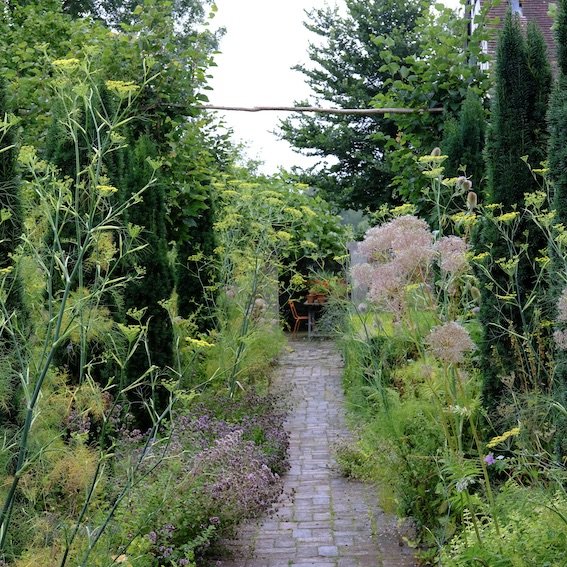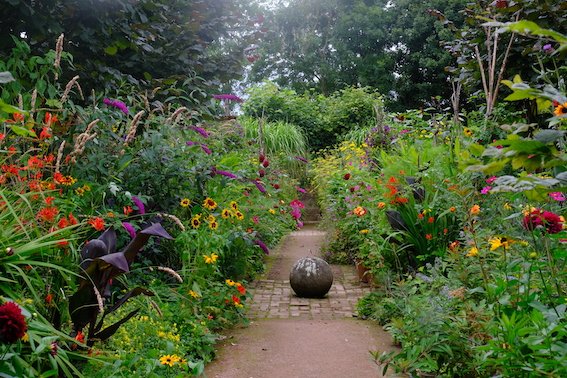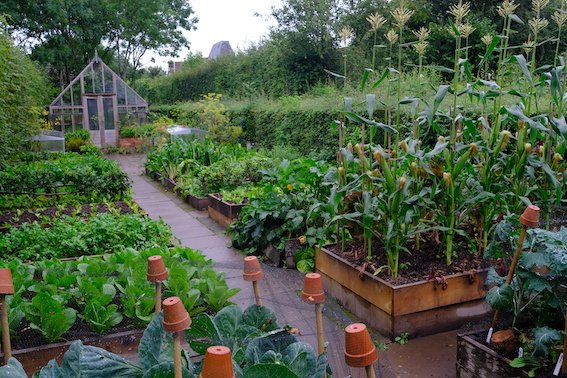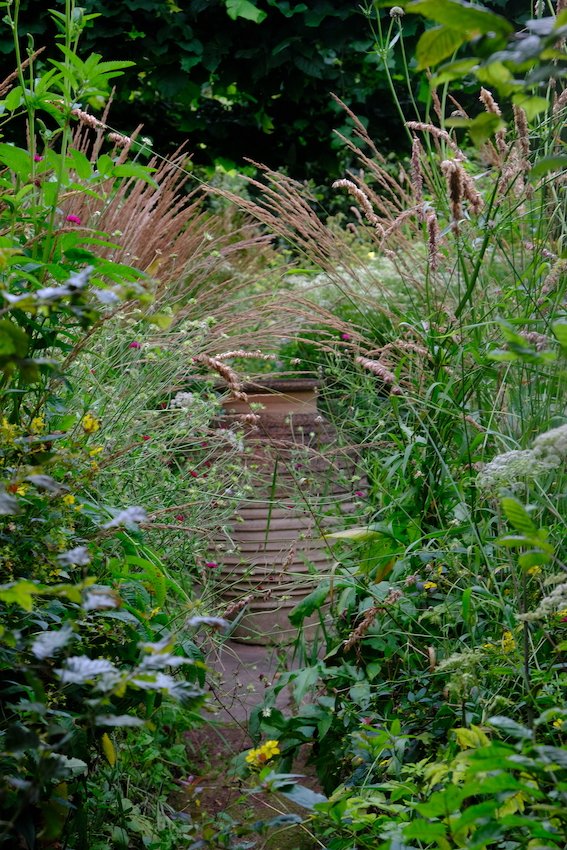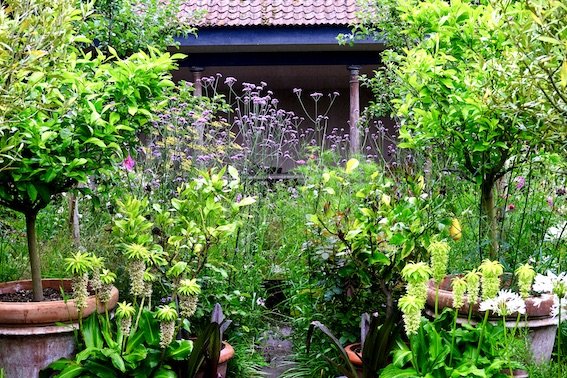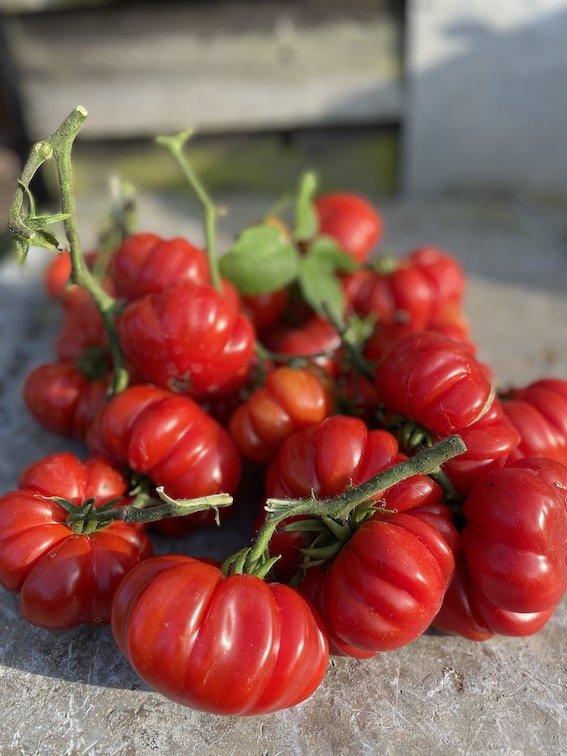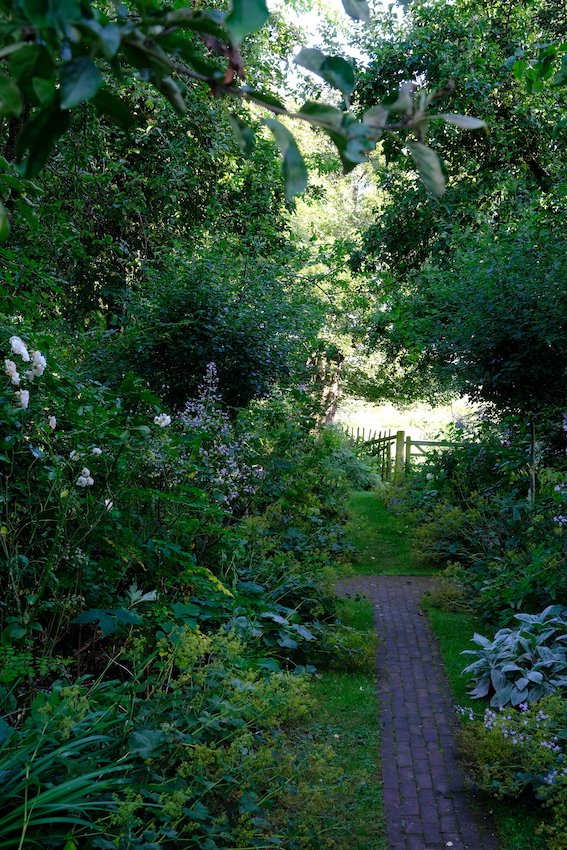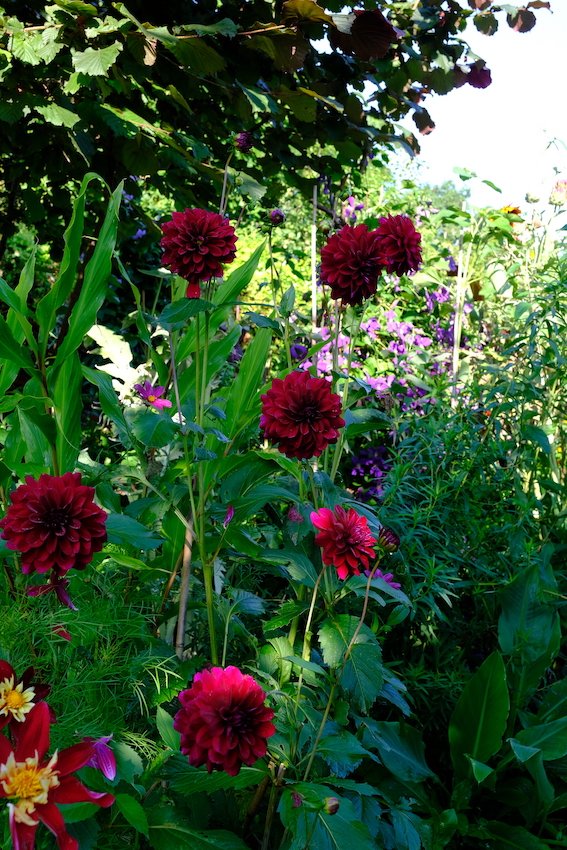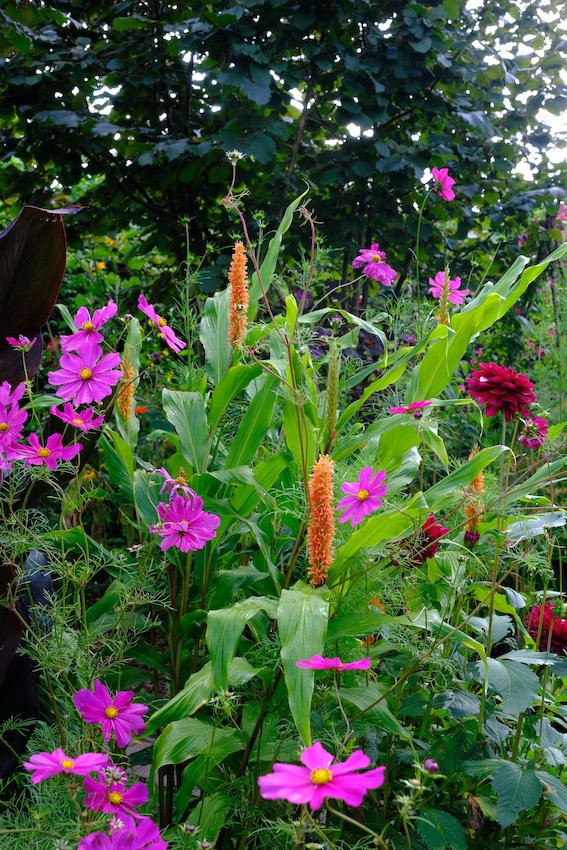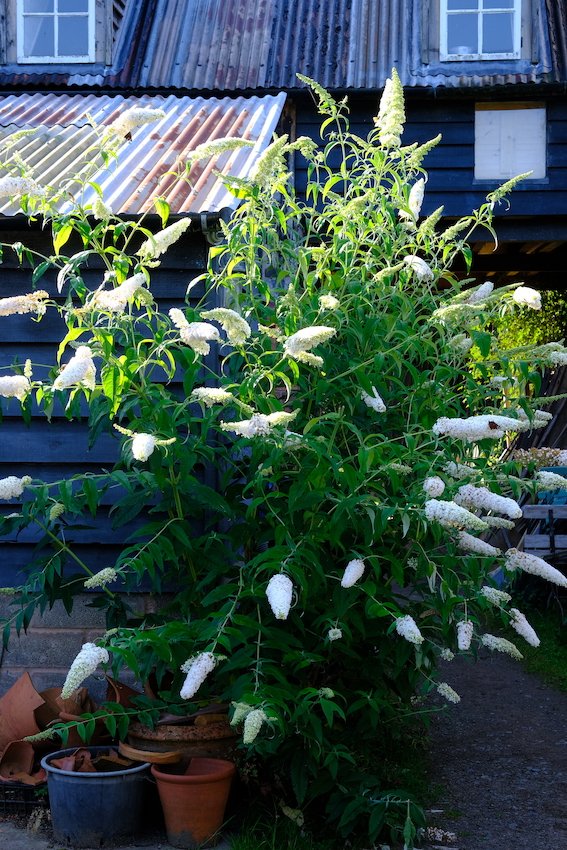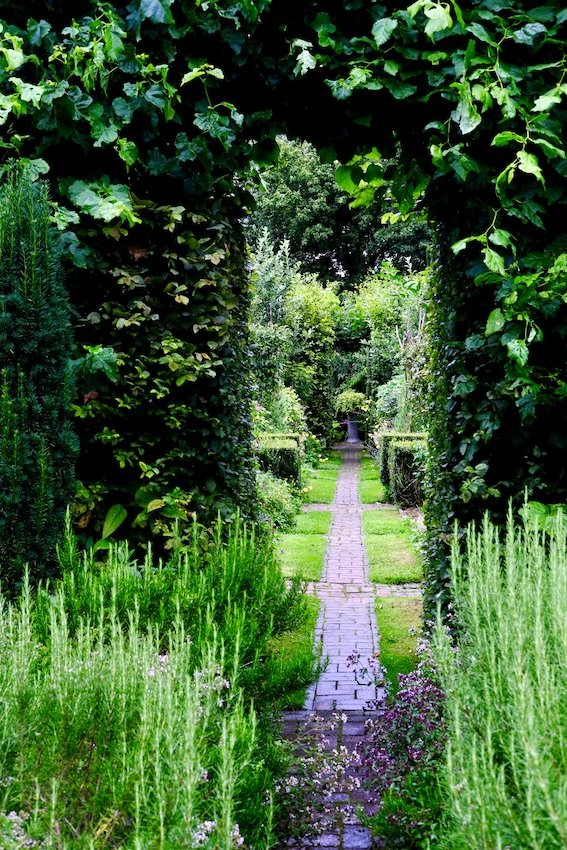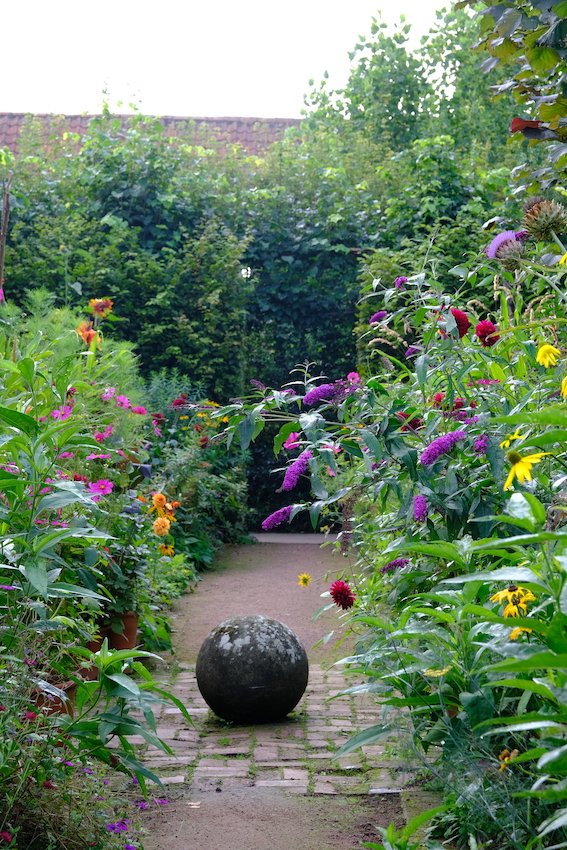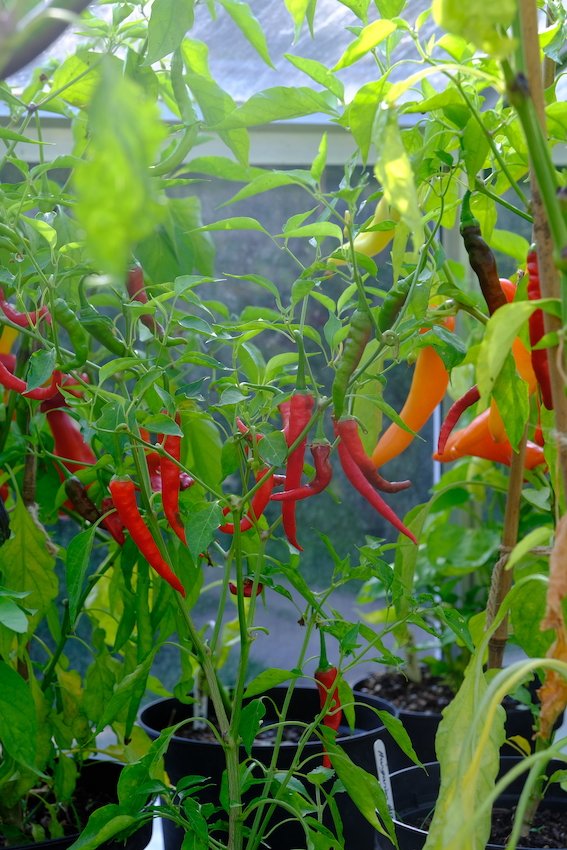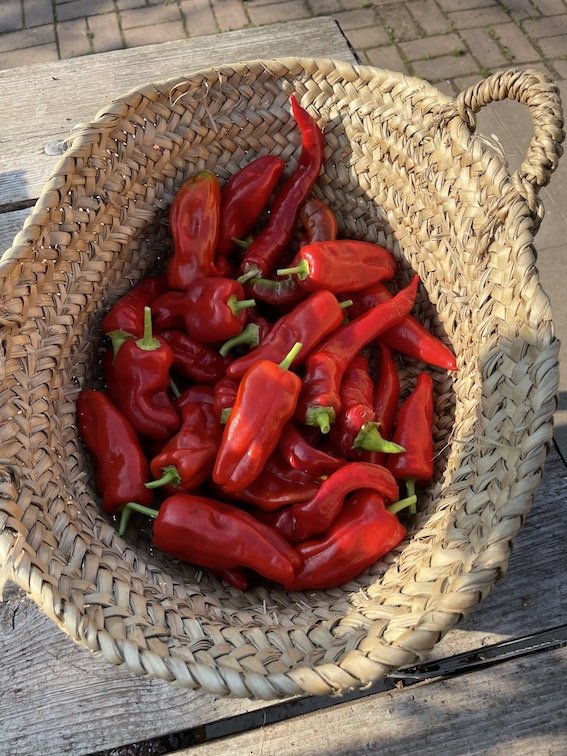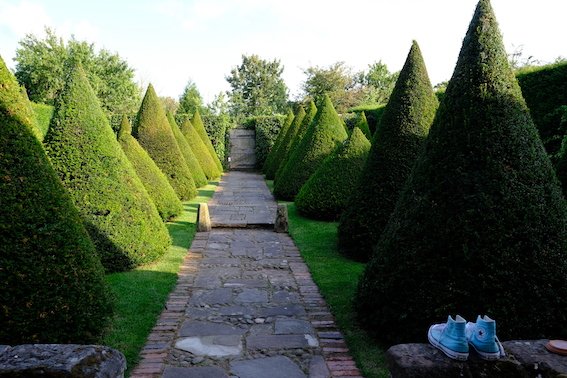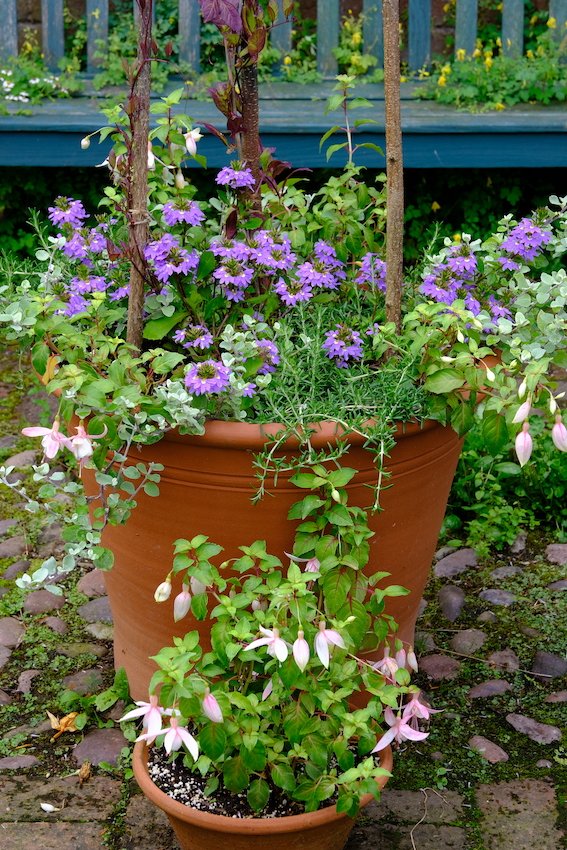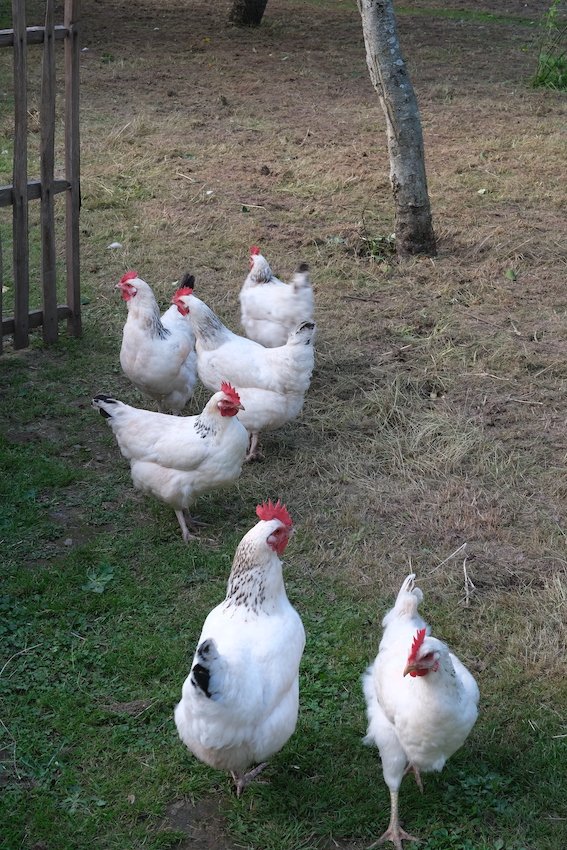August 2022
My garden enters August this year touched by the hottest weather ever recorded in the UK. In fact the heatwave did not last for long, but it was shocking in its intensity. However the real problem is not heat but lack of rain. A dry summer comes off the back of a dry Spring which was preceded by an exceptionally dry winter and autumn before that. These things are all relative - there are parts of the world that would regard the rainfall here in the past 12 months as positively sodden - but it is making us recalibrate what we can and cannot grow here in our gardens.
The biggest issue is that all our shade is now becoming dry- and we have a lot of shade because we have a lot of trees, shrubs and hedges. These all make big demands on what moisture there is, increasing the problem.
But this is all part of the challenge of making a beautiful, productive garden whilst remaining in tune with nature. Climate change is a fact and whilst it can rapidly get worse, any changes for the better will be slow and we have to learn to live - and garden - with this.
But, for all this, August is a month to be relished.
The Jewel Garden in particular hits its peak display in August where tropical plants such as sunflowers, zinnias, tithonia, cannas, gingers, bananas and dahlias and whilst all grow strongly in our rich soil and hit their best displays.
But at the same time this is clearly a kind of ending and the demands of spring and summer growth start to show. The days are still long and hot but are growing shorter and the nights cooler.
There are, however, things that you can do to refresh and reinvigorate the garden so that instead of this becoming the fag end of summer it is the start of a self-contained late-summer season that will stretch into early October.
August is the month to cut all hedges and this not only prunes them and holds them to size and shape, it also freshens up everything and restores a crispness that adds energy.
All long grass can be cut and collected and subsequently kept mown short. This transforms meadows as well as being an essential part of encouraging wild flowers.
August is also a good month for moving herbaceous perennials. Moving plants in early spring is less stressful for the plant but takes a lot of experience and guesswork to really judge the effect later in summer. By doing this when they are in full flower you can see clearly how they look in their new position and how they relate to the other planting around them. Then, having moved them, it is a good idea to cut them back so that the plant has a rest and can recover from the trauma of being uprooted.
August Jobs
Cut Long Grass
If you have areas of long grass - especially if they are planted with bulbs like daffodils or crocus, they should have been left uncut to at least the beginning of last month to allow flowers to set seed and bulb foliage to die back. But August is a good month to cut a flowering meadow as short as possible. The aim is to expose areas of bare soil so that fallen flower seeds can make contact and germinate.
This might mean hiring a powerful cutter or using a strimmer - although a scythe does the job as well as anything. Once the grass is cut it should all be raked up and put onto the compost heap (making sure that it is throughly dampened with a hose unless it is a very small amount).
It is important to remove all cut grass as otherwise it feeds the soil as it decomposes and this will encourage lush regrowth at the expense of the wild flowers and bulbs. However, as long as the grass cuttings are collected, it may be kept mown short right up until winter.
Cut Hedges
It is safe now to trim hedges in the knowledge that the vast majority of nesting birds have fledged. Summer pruning results in slower, less vigorous regrowth than a winter trim so clip hedges to the height and shape that you wish them to remain for the rest of the year. Start with the sides, making sure that you have a slight ’batter’ or outward slope from the top to the bottom. This ensures that the lower section is not shaded by the top growth - which is always more bushy as it gets more light - and the hedge remains fully ‘furnished’ right down to the ground.
Finally, cut the top, using a string strung between canes as a guide. Deciduous hedge trimmings can be mown and added to the compost heap and evergreen ones taken to the council green waste.
Dead Head Dahlias
Dahlias will keep producing new flowers well into autumn as long as they are deadheaded regularly. The easiest way to tell the difference between a spent flower and an emerging bud is by the shape: buds are invariably rounded whereas a spent flower is pointed and cone-shaped. Always cut back to the next side shoot - even if it means taking a long stem - as this will stimulate new flowers and avoid ugly spikes of stem.
And if you do not have dahlias then deadhead anything and everything daily - nothing else is so effective in keeping summer flowers from lasting as long as possible.
Tomatoes
Tomatoes are coming up to their prime harvesting period but to extend this and make sure that all the current green tomatoes fully ripen over the coming month or so there are a few things the tomato grower should do now.
The first is to strip off the bottom half of the leaves on each plant. This will let in light and air so that the growing fruits get more sun and also he extra ventilation will reduce the risk of disease. This process can be continued weekly until there are no leaves left at all.
Reduce the watering unless it is very hot to avoid the fruit splitting but keep up a weekly feed of liquid seaweed or, if you can make it, home-made comfrey feed. Both are ideal for maximising flower and fruit production.
Feeding Containers
August can be the hottest month of the year and although the nights are starting to be cooler (and noticeably shorter) the days can be sweltering and many gardens start to show the strain of drought. Any plants in pots do need regular watering and feeding to sustain the extravagance of their late summer display. I feed all our containers weekly (on Feeding Friday) with liquid seaweed or home-made comfrey feed. Both are high in potash which encourages flower formation and helps keep the display going strongly right into autumn.
If You Are Going Away
If you do get away, albeit for most of us not far this year, prepare the garden so that it will still look good when you get back - especially if it will be left for two weeks. Mow the lawn, weed, and make sure plants are well supported. Pots are most likely to suffer in hot weather and an irrigation system is ideal, but at very least give them a good soak before you go. Ideally move smaller pots into the shade and group them together which will reduce evaporation.
If you have sweet peas or vegetables ready to harvest ask friends or neighbours to come and pick them.
Take Cuttings
As August progresses semi ripe cuttings taken from current season’s wood that has started to harden off are increasingly available and also increasingly likely to root quickly.
Always choose healthy, strong, straight growth free from any flowers or flower buds. Once you have taken material from the plant and placed it in the polythene bag go and pot them up immediately.
Strip off all lower leaves and side shoots so that only an inch or less of foliage remains. Cut the bare stem to size with a sharp knife or secateurs and bury it in a container of very gritty or sandy compost or even pure perlite.
To form good roots the plant does not need any nutrition other than oxygen and water so whatever material you put the plant into must be loose, drain well and not dry out. Once the roots are formed and you see signs of growth then it will start to need better nutrition and need potting into better compost.
Put this somewhere warm and light but not in full sun or on a south-facing windowsill as it may scorch. Water it well and then keep it moist with a daily spray from a hand mister to help stop the leaves drying out before new roots have time to form.
Most cuttings taken at this time of year will take between 4 and 6 weeks to produce viable roots but you know that the roots have formed when you see fresh new growth or, when lifting the pot, see thin roots appearing from the bottom of the pot. At that point the cuttings can be removed from the pot and potted on individually into fresh peat-free potting compost and put aside over winter before planting out next spring.
In principal it is best to take cuttings in the morning whilst the plant is full of moisture but in practise it is something best done as and when you are minded to do it.
Sowing Autumn Salad Crops
Sow hardy salad crops such as ‘Rouge d’hiver’ and ‘Winter Density’ lettuce and Corn Salad, Rocket, Land Cress, Purslane, Mizuna and Mibuna now for harvesting in October and November. If you have a greenhouse or tunnel they will also last through winter. Either sow them into plugs that can be transplanted as seedlings or sow direct in rows. Thin the seedlings as they emerge and keep them weeded and well-watered.
Pruning Lavender
To avoid woody, leggy plants, lavender should be pruned every year. The best time to do this is as soon as the flowers start to fade, which, depending on the variety, can be any time between midsummer and the end of August. But do not wait for the seed heads to form or the flowers to turn brown as you want to allow the maximum amount of time for regrowth before winter.
Cut back hard to a good compact shape but be sure to leave some new shoots on each stem - lavender will often not regrow from bare wood. These new shoots will grow fast and provide an attractive and healthy cover to protect the plant in winter and provide the basis of next year’s display.
Collecting Seed
Growing your favourite plants from seed is easy and practically without cost. Not only will this give you dozens of free plants for future years but also spares to give or swap with friends and family and August is the time to begin collecting seed from your garden.
Use brown paper envelopes - A5 is the idea size - and either carefully cut the seed heads and upend them into the envelopes, seed head and all or else place the envelop over the seed head, seal it and then snip the stem off and store it upside down. Label each envelope clearly with the date, name of the plant and, ideally, the position in the garden, and store them in a cool, dry place.
After a week or two the seeds should be dry and can them be sieved, cleaned and stored in sealed packets. For longer term storage a plastic tub with a tight lid stored in the fridge is ideal.
Watering Camellias, Azaleas and Rhododendrons
Camellias, Azaleas and rhododendrons form their flower buds in late summer and autumn. In other words the display that they give you next Spring is largely determined over the coming weeks. If they are too dry the buds will not form properly and those that are made quite often subsequently drop off in the spring before flowering as a result of dehydration the previous autumn. So give them a good soak - with rainwater if at all possible - especially if they are growing in a container, and do so each week for the next couple of months.
Making New Strawberry Plants
After the early strawberries finish fruiting - usually the middle of July - they put their energy into producer new plants via runners. These are long shoots with one or more plantlets spaced along their length. As the plantlets touch the soil the put down roots, establish quickly and so the plant regenerates itself. By pinning them to the soil or onto a pot with compost in it and then separating it from the mother plant these can be harvested as new plants that will have more vigour than the parent and keep your stock replenished and refreshed. I dig up and compost the parent plant after four years as their productivity rapidly declines after this and they often accumulate viruses.
By the end of August the rooted plantlets are ready for planting out into a new bed that has had a generous amount of compost added to it as strawberries are greedy feeders (they should always be planted on soil that has not grown strawberries for at least three years to avoid possible viruses). Space these at least 12 inches apart and ideally twice that to allow for maximum growth and productivity. Keep them well watered and mulch with more compost in autumn.
Ordering Bulbs
it is a good idea to order your spring flowering bulbs now for planting in September or October (although tulips should not be planted until November)
Marsha Arnold Photography Workshop
Lastly, if you enjoy the portraits that feature on this page, Marsha Arnold is hosting a garden photography workshop at one of my favourite gardens, Rousham in Oxfordshire, the 18th-century masterpiece of designer William Kent. The workshop will take place on Sat 10 September and is for all levels, from a smartphone to a professional camera. Book at marshaarnold.co.uk/workshops



